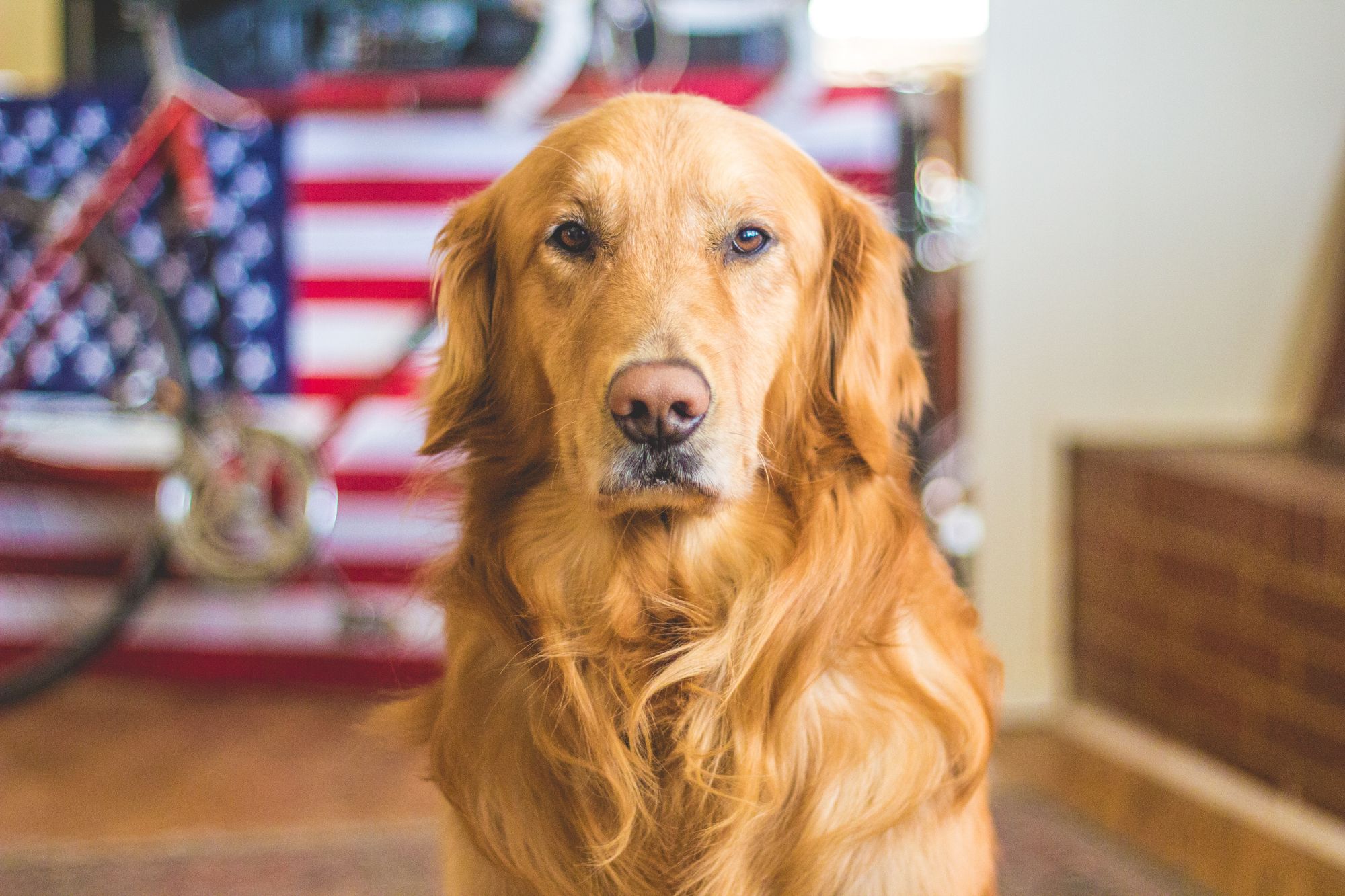
Having a service dog can be life-changing for individuals with disabilities. Service dogs are specially trained canines that assist people with disabilities by performing specific tasks that mitigate their limitations. If you're considering making your dog a service dog, this article will guide you through the process, providing valuable insights on training, legal requirements, and responsibilities.
Understanding Service Dogs
What is a Service Dog?
A service dog is a highly trained canine that assists individuals with disabilities by performing tasks directly related to their disability. These tasks can include retrieving objects, opening doors, providing stability, alerting to sounds, and much more. Service dogs are protected by the Americans with Disabilities Act (ADA), granting them access to public places alongside their handlers.
Service dogs are different from emotional support animals (ESAs) and therapy dogs. While emotional support animals provide comfort and emotional support to individuals with mental health conditions, service dogs are trained to perform specific tasks that assist their handlers in their daily activities.

Different Types of Service Dogs
Service dogs are trained to assist individuals with various disabilities, and different types of service dogs are specifically trained for each disability. Here are some common types of service dogs:
1. Guide Dogs: Guide dogs assist individuals with visual impairments by navigating obstacles, avoiding hazards, and providing guidance and support during mobility.
2. Hearing Dogs: Hearing dogs are trained to alert individuals with hearing loss to important sounds such as doorbells, phone ringing, smoke alarms, or approaching vehicles.
3. Mobility Assistance Dogs: These dogs provide support to individuals with mobility limitations, helping them with tasks such as opening doors, retrieving dropped items, and providing balance and stability.
4. Medical Alert Dogs: Medical alert dogs are trained to recognize and respond to specific medical conditions such as diabetes, epilepsy, or allergies. They can alert their handlers to changes in blood sugar levels, impending seizures, or allergens.
5. Psychiatric Service Dogs: Psychiatric service dogs assist individuals with psychiatric disabilities by performing tasks such as interrupting self-harming behaviors, providing deep pressure therapy during anxiety or panic attacks, and creating a physical barrier in crowded spaces.
It's important to note that the type of service dog needed depends on the individual's specific disability and the tasks required to mitigate their limitations. The training and selection process for each type of service dog may vary to meet the unique needs of the handler.
Legal Rights and Requirements
The Americans with Disabilities Act (ADA) is a federal law that protects the rights of individuals with disabilities, including those who rely on service dogs. Under the ADA, service dogs and their handlers have certain rights:
- Public Access: Service dogs are allowed to accompany their handlers into places that are open to the public, such as restaurants, stores, hotels, and public transportation. They cannot be denied entry based on their status as service dogs.
- Reasonable Accommodations: Businesses and establishments covered by the ADA are required to make reasonable accommodations to allow individuals with disabilities and their service dogs to access their services. This includes modifying policies or procedures if necessary.
- Nondiscrimination: Service dogs cannot be subjected to discrimination based on their breed or appearance. They should not be denied access solely because they are not a specific breed or do not wear specific identification.
It's important to note that emotional support animals and therapy dogs are not covered by the same rights and protections as service dogs under the ADA. Service dogs must be individually trained to perform tasks that mitigate their handler's disability.
Eligibility and Documentation
To have a service dog, the individual must have a disability recognized by the ADA. The ADA does not require any specific certifications, licenses, or identification for service dogs. While there are organizations that offer voluntary certifications or identification, they are not legally required.
However, it's advisable to have some form of documentation or identification for your service dog to simplify interactions with businesses or individuals who may not be familiar with the ADA regulations. This can include a doctor's letter stating your disability and the need for a service dog, as well as information about the tasks the happy dog is trained to perform.
It's crucial to consult with professionals such as trainers, veterinarians, and disability rights organizations to ensure you understand the legal rights and requirements of having a service dog. They can provide guidance on the specific documentation or identification that may be beneficial in your circumstances.
Choosing the Right Dog
When considering making your dog a service dog, it's critical to choose the right dog that possesses the necessary qualities for service work. Here are some factors to consider:
1. Temperament: A service dog should have a calm, friendly, and stable temperament. They should be able to remain focused and composed in various environments and situations.
2. Trainability: Look for a dog that is intelligent and trainable. Service dogs undergo extensive training, so it's essential to choose a dog that can easily learn and retain commands.
3. Size and Physical Ability: Consider the physical requirements of the tasks the dog will need to perform. For example, if the handler requires mobility assistance, a larger and stronger dog may be necessary.
4. Health: A service dog needs to be in good health to fulfill its duties effectively. Ensure that the dog is free from any major health issues that could hinder their ability to perform tasks or live a long, healthy life.
5. Breed Considerations: While any breed can potentially become a service dog, certain breeds are commonly chosen due to their temperament, intelligence, and physical attributes. However, individual temperament and characteristics are more important than breed alone.
6. Breeds Suited for Service Work: While any breed can potentially become a service dog, certain breeds are often preferred due to their inherent traits and characteristics. Breeds like Labrador Retrievers, Golden Retrievers, German Shepherds, and Standard Poodles are known for their intelligence, trainability, and suitability for service work. However, individual temperament and aptitude should be considered over breed alone.
7. Assessing Individual Dogs: If you already have a dog and are considering making them a service dog, evaluate their temperament, trainability, and overall suitability for service work. Consult with a professional service dog trainer or organization to assess your dog's potential.
Remember that not every dog is suited to become a service dog, and it's necessary to be realistic in your expectations. Working with a reputable service dog trainer or organization can greatly assist in the selection process, as they have experience in identifying dogs with the potential for service work.

Training a Service Dog
Basic Obedience Training
Before a dog can become a service dog, it needs to undergo basic obedience training. This training establishes a foundation of good behavior and responsiveness to commands. Some key aspects of basic obedience training include:
- Sit: Teaching the dog to sit on command is essential for various situations, such as waiting at crosswalks or interacting with others.
- Stay: Training the dog to stay in one place until given a release command is crucial for ensuring control and safety.
- Down: Teaching the dog to lie down on command is helpful for situations that require the dog to be calm and settled.
- Come: Training the dog to come to its handler when called is vital for recall and maintaining adjacent proximity.
- Leash Skills: Teaching the dog to walk calmly on a leash without pulling is required for maintaining control and ensuring the dog's focus on its handler.
Basic obedience training can be conducted through positive reinforcement techniques, such as rewarding the dog with treats, praise, and affection. Consistency, patience, and regular training sessions are key to successful obedience training.
Task Training
Task training is the most critical aspect of service dog training, as it involves teaching the dog specific tasks that assist the handler with their disability. The tasks trained will depend on the handler's specific needs. Some examples of tasks that service dogs can be trained to perform include:
- Retrieving: Teaching the dog to retrieve objects such as medication, a phone, or keys.
- Opening Doors: Training the dog to push or pull doors open, is especially useful for individuals with mobility limitations.
- Alerting: Teaching the dog to alert the handler to sounds, such as a doorbell or a smoke alarm, or physical cues like an oncoming seizure or low blood sugar levels.
- Bracing: Training the dog to provide stability and balance support to individuals with mobility issues.
- Interrupting Behaviors: Teaching the dog to interrupt repetitive or self-harming behaviors common in individuals with psychiatric disabilities.
Task training requires professional guidance from a qualified service dog trainer. It involves breaking down each task into small, achievable steps using positive reinforcement techniques. The training process can be time-consuming and may require ongoing practice and reinforcement.
Socialization and Public Etiquette
Exposing the Dog to Different Environments
Service dogs need to be comfortable and well-behaved in various public settings. Early socialization plays a crucial role in shaping their behavior. Introduce your service dog to different environments, such as shopping malls, parks, and restaurants, gradually exposing them to new sounds, smells, and distractions.
Proper Behavior in Public
Service dogs must exhibit proper behavior in public to ensure a positive experience for their handlers and the public. They should remain focused on their tasks, avoid excessive barking or jumping, and maintain good manners. Regular training sessions and ongoing reinforcement will help maintain public etiquette.
Certification and Evaluation
Assessing the Dog's Skills
While certification is not legally required, some organizations offer voluntary evaluations and certifications for service dogs. These assessments can validate the dog's skills and ensure they meet the necessary standards. However, it's essential to research reputable organizations that adhere to high training and evaluation standards.
Obtaining Certification
To obtain certification, you can contact reputable service dog organizations or trainers who provide evaluation services. They will assess your dog's abilities and issue the necessary certification or identification if they meet the required criteria. Remember, certification does not replace the legal rights provided by the ADA.
Responsibilities of a Service Dog Owner
Providing Proper Care and Health Maintenance
As a service dog owner, it is your responsibility to provide proper care and maintenance for your canine companion. This includes regular veterinary check-ups, vaccinations, grooming, and appropriate nutrition. Maintaining your dog's health ensures they can perform their duties effectively and enjoy a good quality of life.

Continuing Education and Training
Training should be an ongoing process throughout your service dog's life. Engage in continuing education to learn new training techniques and keep up with any updates in service dog practices. Regular training sessions and mental stimulation activities will help strengthen the bond between you and your dog while refining their skills.
Benefits of Owning a Service Dog
Assistance and Support
Service dogs offer invaluable assistance and support to individuals with disabilities. They can enhance independence, increase mobility, and provide emotional comfort. Service dogs become trusted companions, offering unconditional love and a sense of security.
Improved Quality of Life
Owning a service dog can significantly improve the overall quality of life for individuals with disabilities. They provide a sense of purpose, and companionship, and help individuals overcome physical and emotional challenges. Service dogs enable greater participation in daily activities, leading to a more fulfilling and independent lifestyle.
Conclusion
Making a dog a service dog requires careful consideration, dedication, and commitment. By understanding the legal rights, selecting the right dog, providing comprehensive training, and fulfilling the responsibilities of a service dog owner, you can create a successful partnership. Service dogs have the power to transform lives, offering assistance, support, and an unwavering bond with their handlers.
FAQs
1. Q: Can any dog become a service dog?
A: While any breed can potentially become a service dog, not all dogs are suited for the role. Temperament, trainability, and individual characteristics are crucial factors to consider.
2. Q: Is certification required for a service dog?
A: Certification is not legally required under the ADA. However, some organizations provide voluntary certifications or identification, which can be beneficial in certain situations.
3. Q: Can I train my own service dog?
A: Yes, it is possible to train your own service dog. However, it requires knowledge, dedication, and adherence to training standards. Working with a professional trainer is recommended.
4. Q: How long does it take to train a service dog?
A: The training duration varies depending on the dog's temperament, the tasks to be trained, and the consistency of training. It can take several months to a couple of years.
5. Q: Can service dogs be denied entry to public places?
A: Under the ADA, service dogs cannot be denied entry to public places. However, they are expected to be well-behaved and under control at all times.






